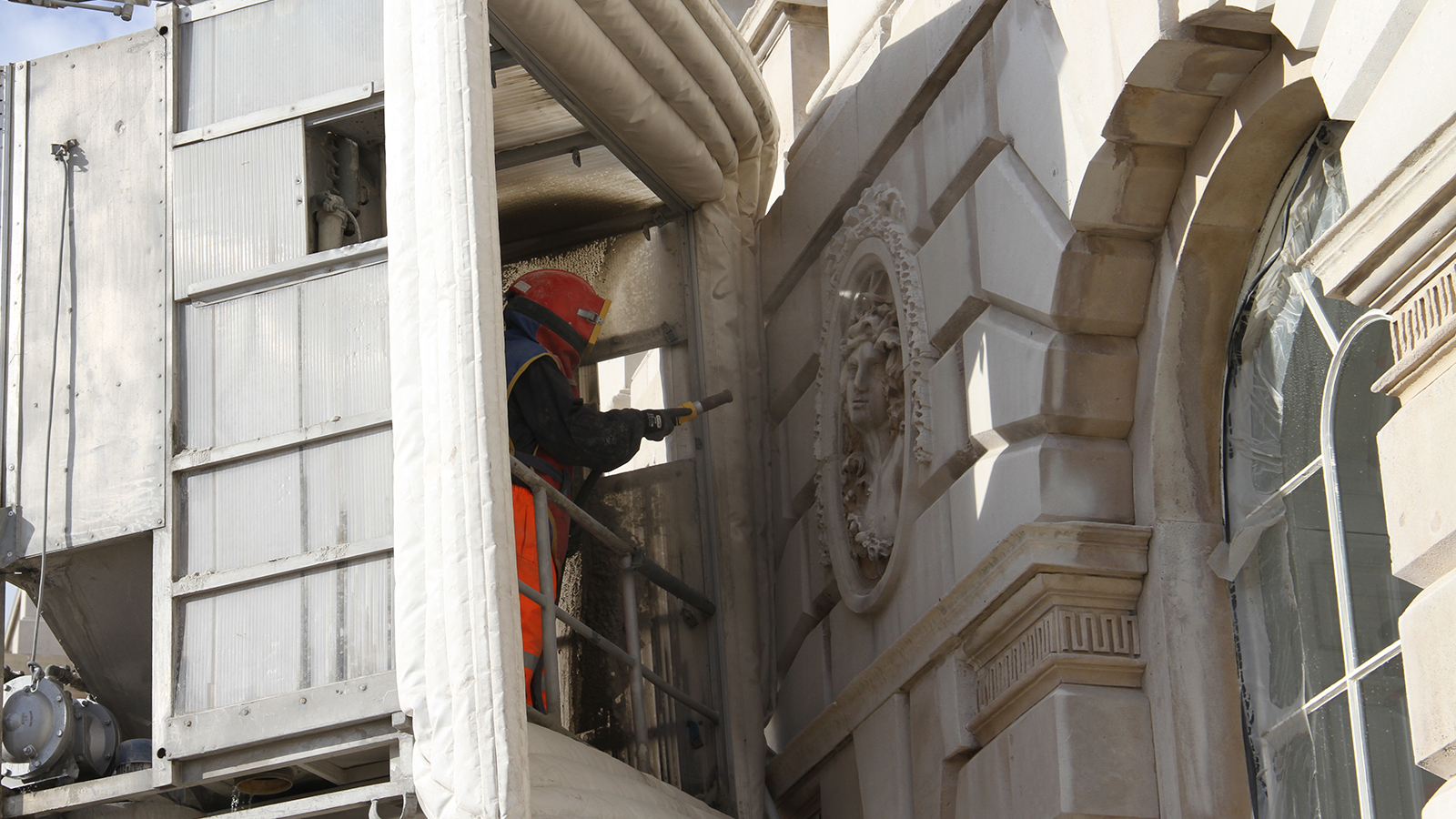In terms of grandeur, few buildings in London can rival Somerset House, the palatial and Palladian home of the artworks of the Courtauld Institute. Sitting on the north bank of the Thames, opposite the National Theatre, it was built on the site of the Duke of Somerset’s Tudor mansion which later became the official residence of several of the Stuart monarchs’ wives before being rebuilt entirely in the late 18th century to house the Royal Academy, Royal Society and assorted government offices.
On a sunny summer’s day, its Portland stone façade gleams with an almost unnatural whiteness in a city far better known for its muted browns and greys. A quick glance at Somerset House’s lower level, which runs next to a busy road carrying traffic along the riverside, tells you that white is not the building’s customary colour but is due to a very deep clean. The work was carried out by the British restoration specialists Thomann-Hanry using a technique that the company has developed to clean historic stonework and elevations, called “façade gommage” - from the French for rub or exfoliate. The method involves raising a cabin – about the size of a transit van – on the arm of a cherry picker to the required level and directing a hose at the area that needs work.
Images: Thomann-Hanry archives
So far, so normal but, rather than water or the grit used more commonly, the gommage system uses a very fine, but sharp-edged, powder made from aluminium silicate (a waste product from the manufacture of aluminium) which is delivered at low pressure to the stonework and gently removes the built-up grime. “It’s akin to mineral talc,” says Mark Styles, Thomann-Hanry’s managing director. “If you dropped a handful in a room, it would waft and spread out rather than fall to the floor so it’s incredibly light compared to what might be used in [other] cleaning processes.”
The raised cabin contains large fans that create a vacuum so that all the loosened dirt and the aluminium silicate powder is then sucked back into it and passed through a water curtain, which turns the waste into a slurry. This is then run back to ground level and filtered to separate out the powder and dirt which is eventually used for aggregate while the water is recycled.
Its absence of chemicals, reuse of water and repurposing and recycling of an industrial by-product give the gommage method impeccable eco-credentials which certainly make it attractive. But, perhaps a bigger draw is that its lack of scaffolding gives it relative nimbleness.
Images: Thomann-Hanry archives
In Milan, for example, Thomann-Hanry was commissioned to clean the nine-storey Hotel Principe di Savoia, work that had to be largely completed during August when the city empties out. In New York, it built a custom-made cabin to tackle work on the 59-storey MetLife building – too tall for its usual cherry picker method – and the gommage method was deemed gentle enough to clean a 3,500-year Egyptian obelisk in the city’s Central Park. (Other high-profile international projects have included the Kremlin and all 155,000 m2 of the Louvre’s facades.)
The cost of cleaning Somerset House’s enormous River Terrace façade is about £550,000 – a not inconsiderable amount but, according to Styles, no more expensive and possibly even slightly cheaper than using traditional methods. Crucially, it is much less intrusive. The venue has become a London landmark with a packed schedule of open-air events and concerts that all generate income for its maintenance. Clad it for several months in scaffolding and it would be far less Instagrammable.
The venue has become a London landmark with a packed schedule of open-air events and concerts that all generate income for its maintenance.
Images: Thomann-Hanry archives
More importantly, the building’s monumental Classical architecture makes it a dead ringer for many of the government buildings in Whitehall – in fact, until quite recently, it was tenanted by HMRC – which means it is a very sought-after location for film-makers: it has appeared in two Bond films, Love Actually, Sherlock Holmes and even doubled up as Himmler’s Berlin headquarters in The Eagle Has Landed. The lack of clutter that comes with façade gommage is extremely helpful. “If we need to, we can be asked to remove all our equipment in three or four hours and they can get on with filming,” says Styles.
The firm’s machinery is likely to be a familiar site for visitors for some time, however, as Somerset House rights itself after its loss of income due to COVID-19 precautions – a grant is in place to pay for the final bits of cleaning of its southern, River Terrace façade. As income is generated once again, the Thomann-Hanry team will be called back to start work on one of its other facades or gigantic courtyards. “We did the north façade about two years ago,” says Styles. “It’s a rolling programme, everything needs cleaning every five years.”
Get Modus features sent straight to your inbox by signing up for the newsletter.
It has appeared in two Bond films, Love Actually, Sherlock Holmes and even doubled up as Himmler’s Berlin headquarters in The Eagle Has Landed.








